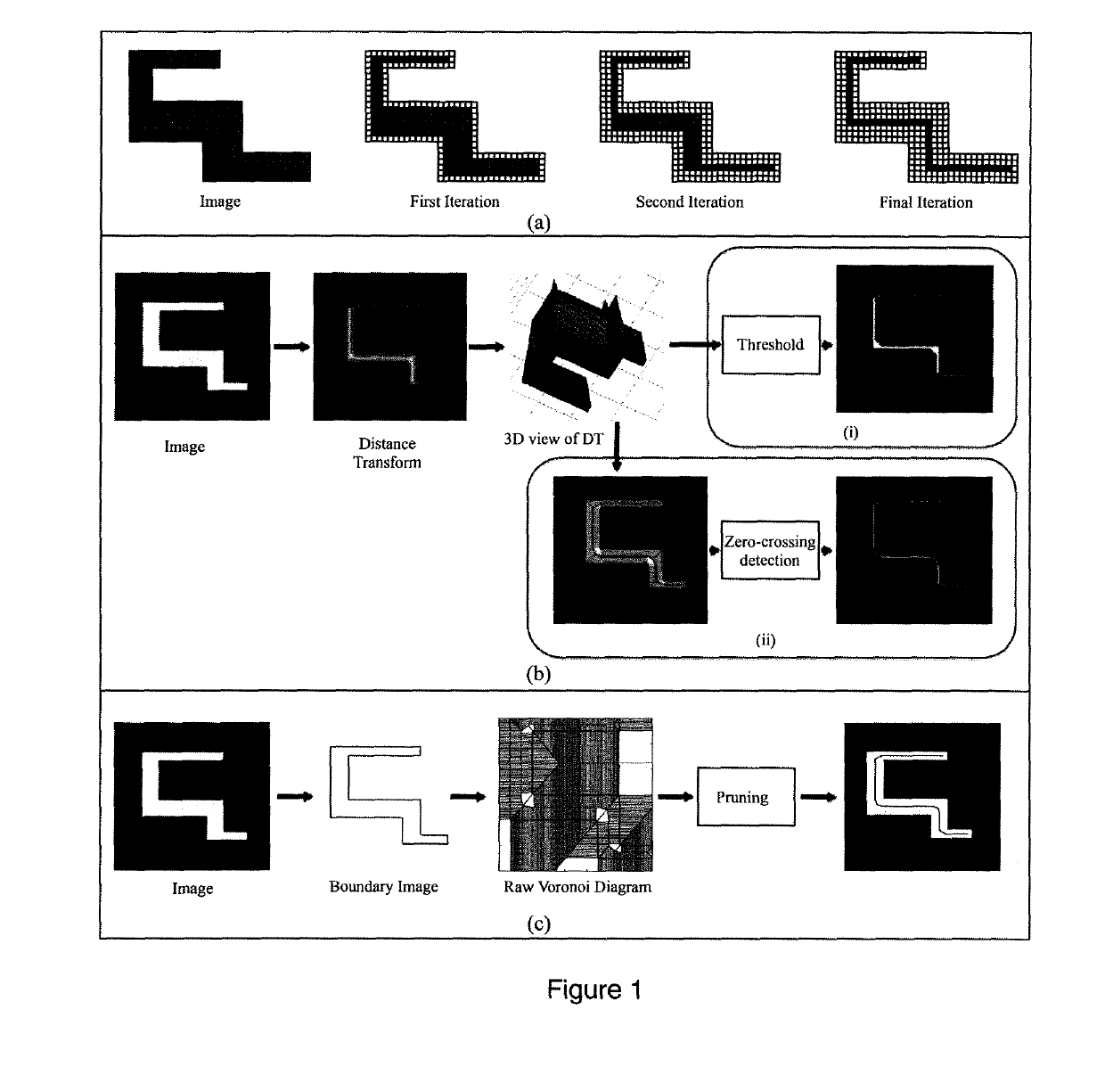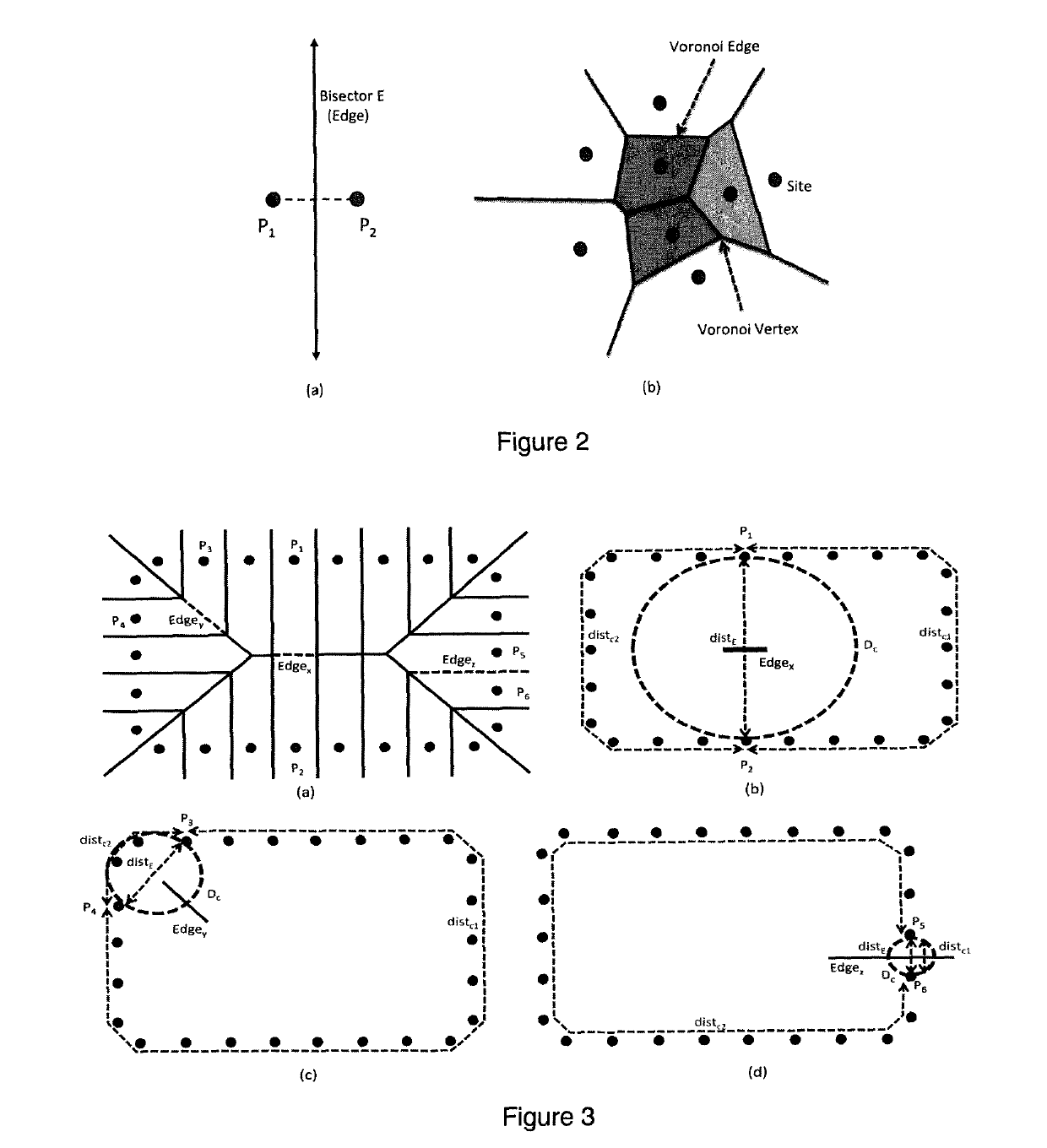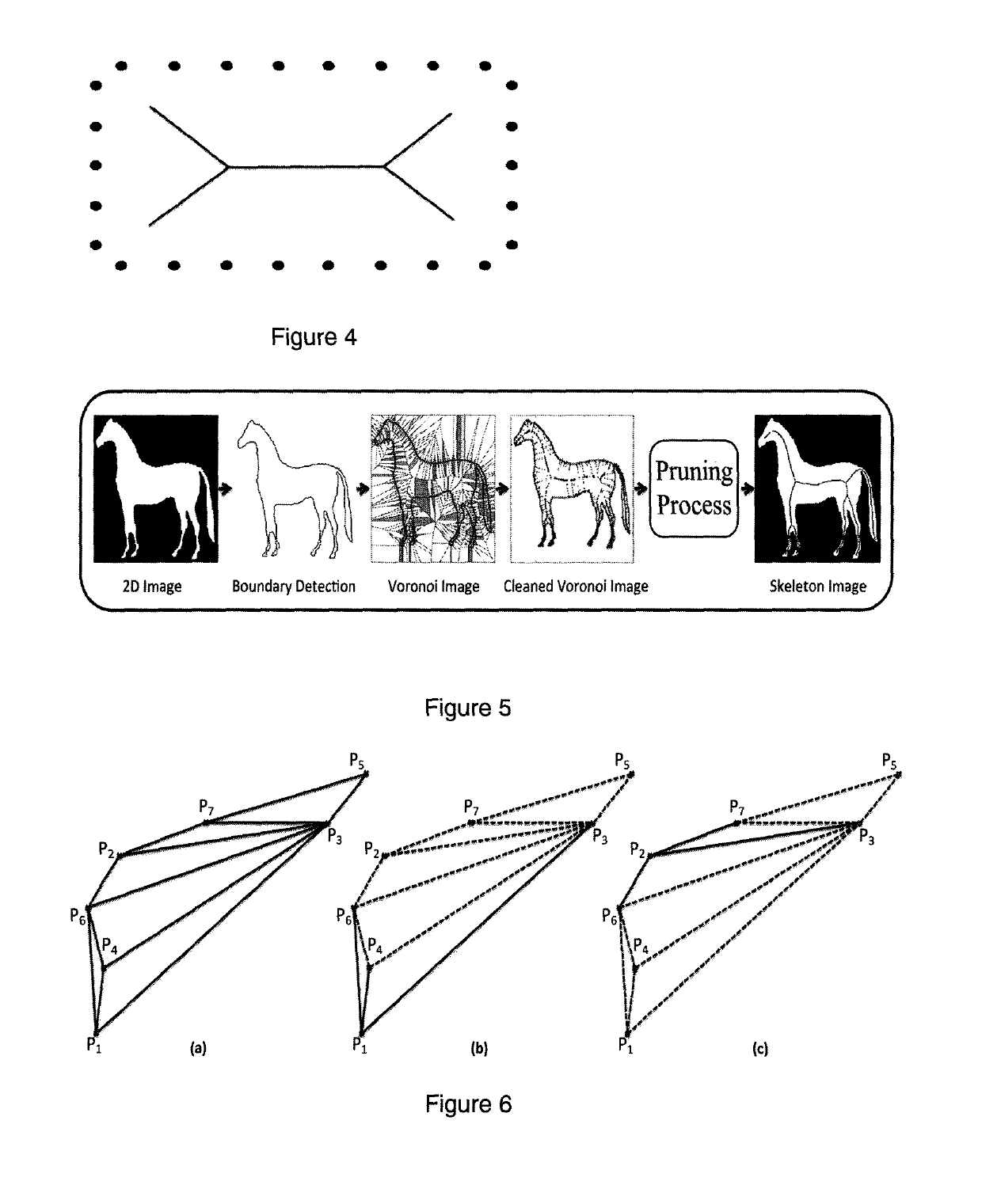Medial axis extraction for complex 3D objects
a technology of complex 3d objects and axes, applied in the field of medial axis extraction for complex 3d objects, can solve the problems of missing axis, missing skeleton, and missing skeleton,
- Summary
- Abstract
- Description
- Claims
- Application Information
AI Technical Summary
Benefits of technology
Problems solved by technology
Method used
Image
Examples
experiment 1
[0103]The control parameter T used in (3) controls the strictness of the pruning process by determining the number of branches that are retained in the final extracted skeleton. In this case, lower values of it (e.g., π / 3, π / 2, 2π / 3) will retain more branches in the skeleton, while using higher values of it (such as 2π) will remove more branches from the skeleton. FIG. 11 shows the effect of different values of π on the skeleton.
[0104]The stability of the Voronoi algorithm was then tested on a random assortment of 2D binary images taken from the benchmark MPEG-7 database [45]. For this experiment, different variations of control parameter were used in order to extract the skeleton of the respective image. FIG. 12 shows the results, which prove that the implemented 2D Voronoi algorithm accurately extracted the 2D skeletons for each image.
experiment 2
[0105]In this experiment, the complete Voronoi algorithm for 3D medial axis extraction was tested on a random assortment of smooth and continuous 3D binary images from the McGill 3D Shape Benchmark database [46]. For each 3D image, the algorithm produced four possible medial axes (FIG. 13), as discussed above in the methodology section. However, the most accurate among these (selected by visual examination) consistently demonstrated that the presently disclosed algorithm accurately extracted the connected medial axis and maintained the 3D topology of the original smoothed and continuous image (FIG. 14). With reference to FIG. 13, clearly The medial axis formed by the YZ-common intersection (b) is the only skeleton that is continuous, one voxel thin, and preserves the topology of the input image. Therefore, this is can be easily (visually) identified by the user and saved as the correct medial axis.
experiment 3
[0106]After confirming that the 3D medial axis extraction algorithm consistently performed well on smooth and continuous 3D images, it was further desirable to identify whether it was robust enough for potential 3D medical imaging applications. Binary masks from medical images can be more complex than the previous benchmarking images due to lower resolution and less smooth, more irregular shapes. As a result, extracting medial axes for these kinds of images is a more complicated task.
[0107]In this experiment, the 3D medial axis extraction algorithm was subjected to a ‘stress test’ by evaluating its performance on human brain white matter atlases that were derived from diffusion tensor imaging data. Specifically, a random assortment of fiber tracts were chosen from the University of Manitoba & Johns Hopkins University Functionally-Defined White Matter Atlas [47] to test the algorithm. As shown in FIG. 15, the algorithm worked surprisingly well for most of the fiber tracts. Among the ...
PUM
 Login to View More
Login to View More Abstract
Description
Claims
Application Information
 Login to View More
Login to View More - R&D
- Intellectual Property
- Life Sciences
- Materials
- Tech Scout
- Unparalleled Data Quality
- Higher Quality Content
- 60% Fewer Hallucinations
Browse by: Latest US Patents, China's latest patents, Technical Efficacy Thesaurus, Application Domain, Technology Topic, Popular Technical Reports.
© 2025 PatSnap. All rights reserved.Legal|Privacy policy|Modern Slavery Act Transparency Statement|Sitemap|About US| Contact US: help@patsnap.com



